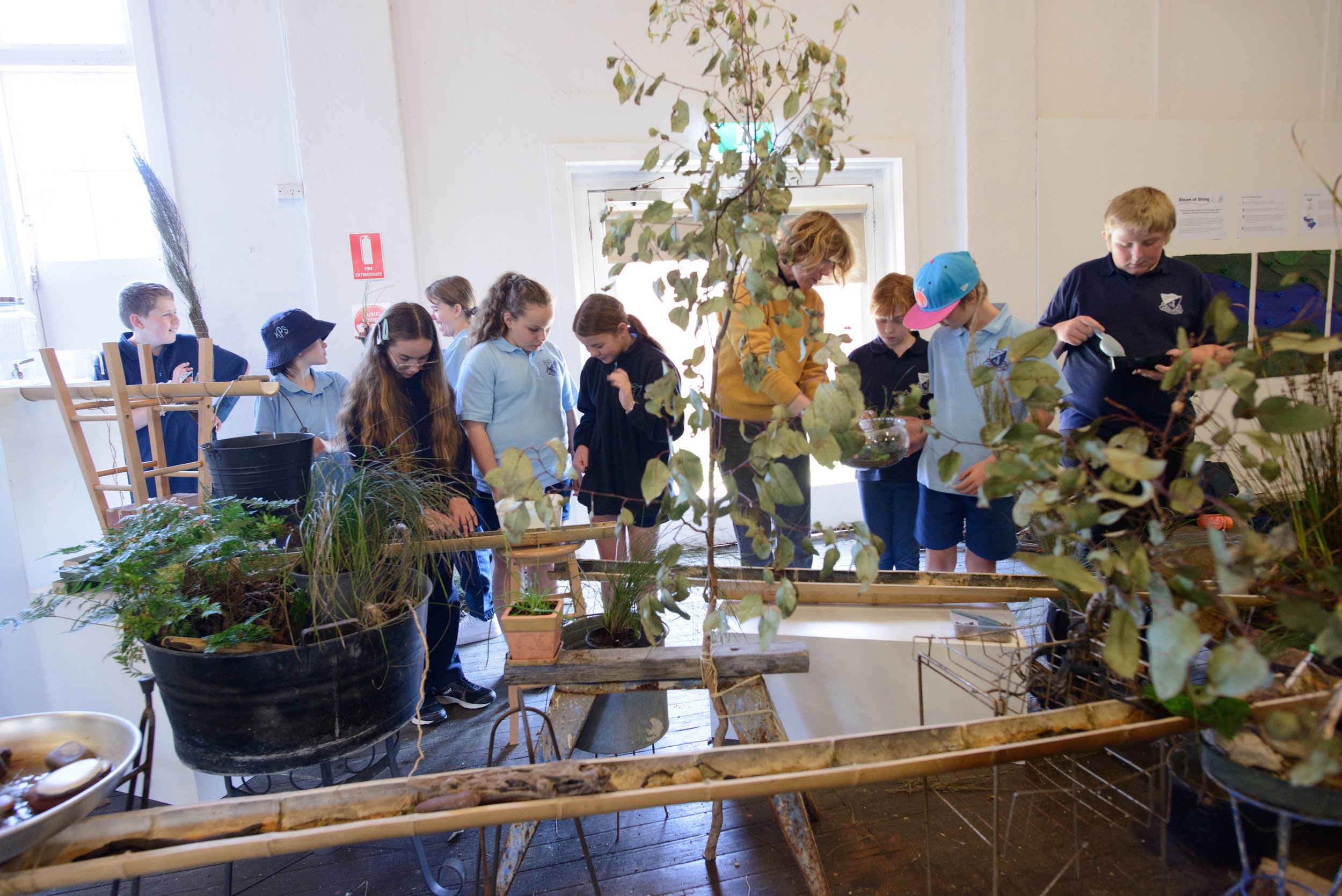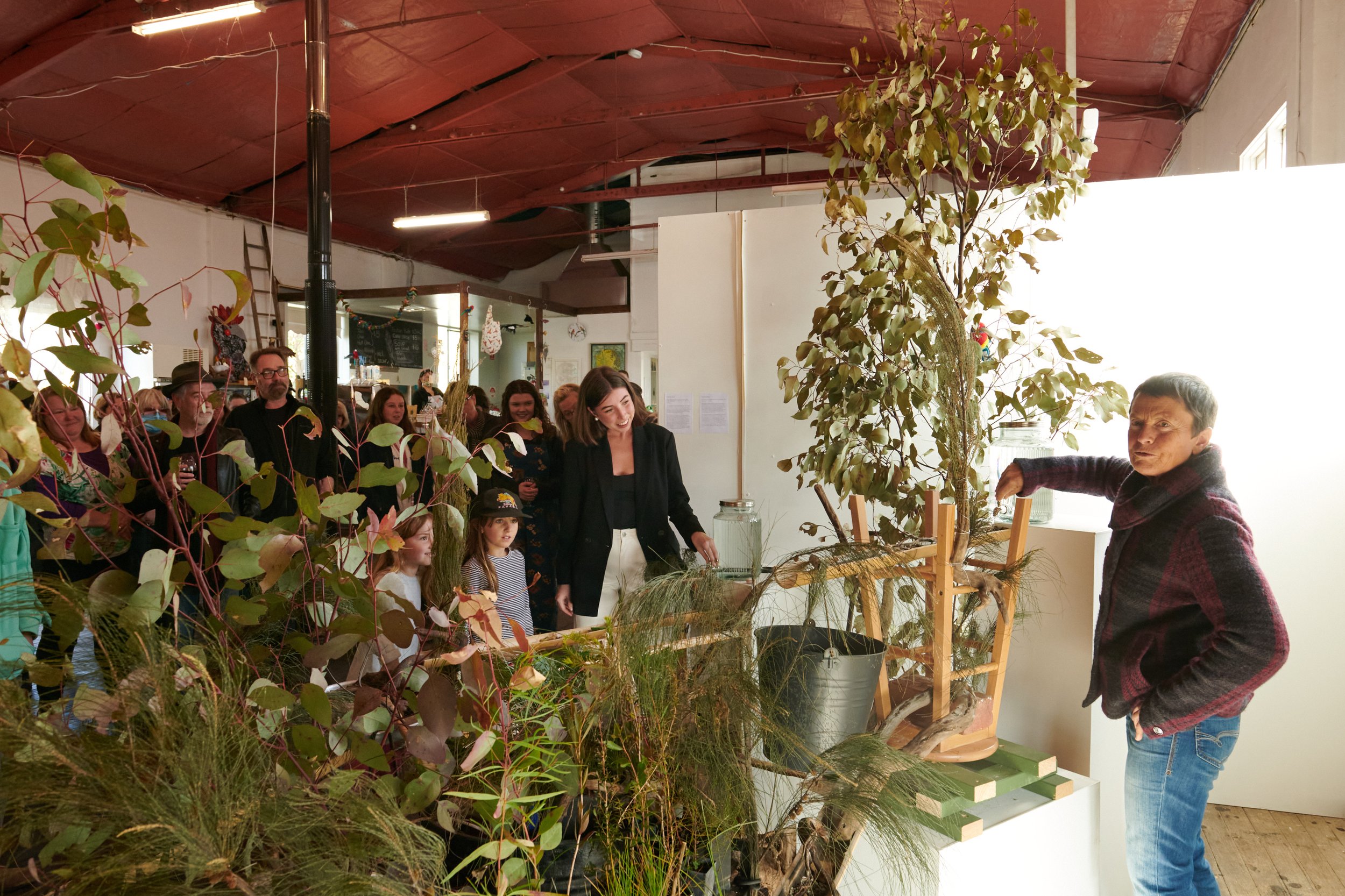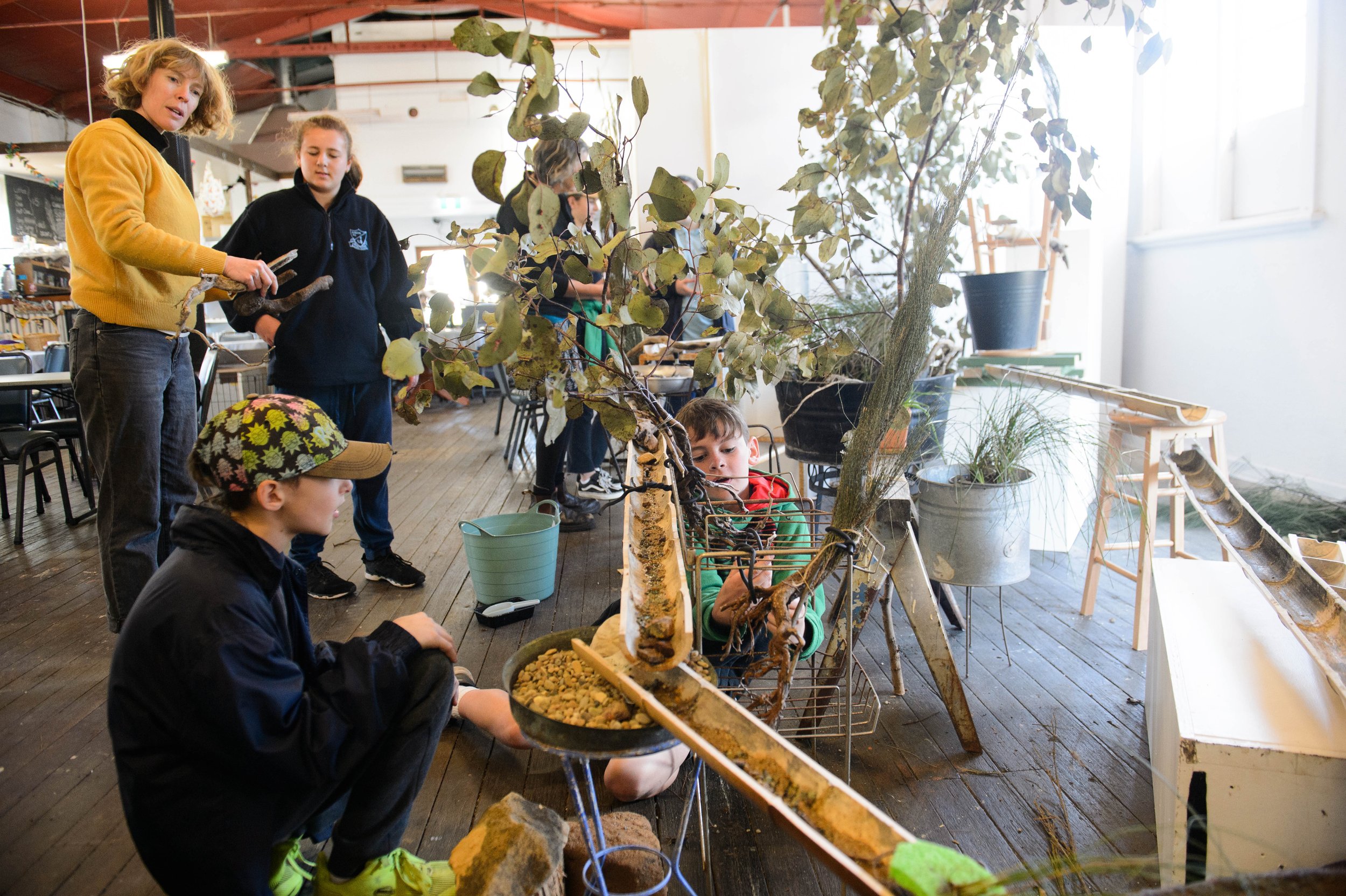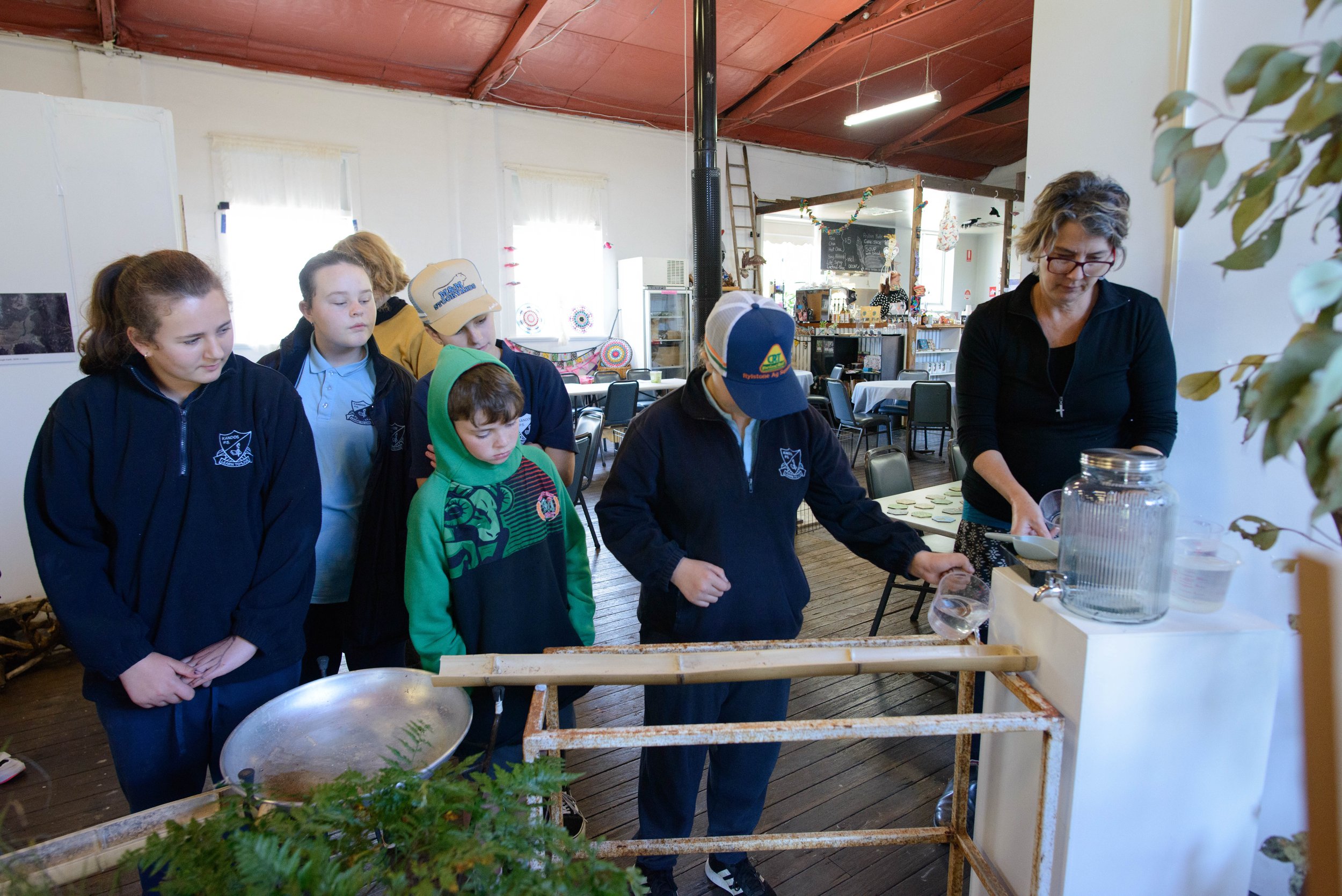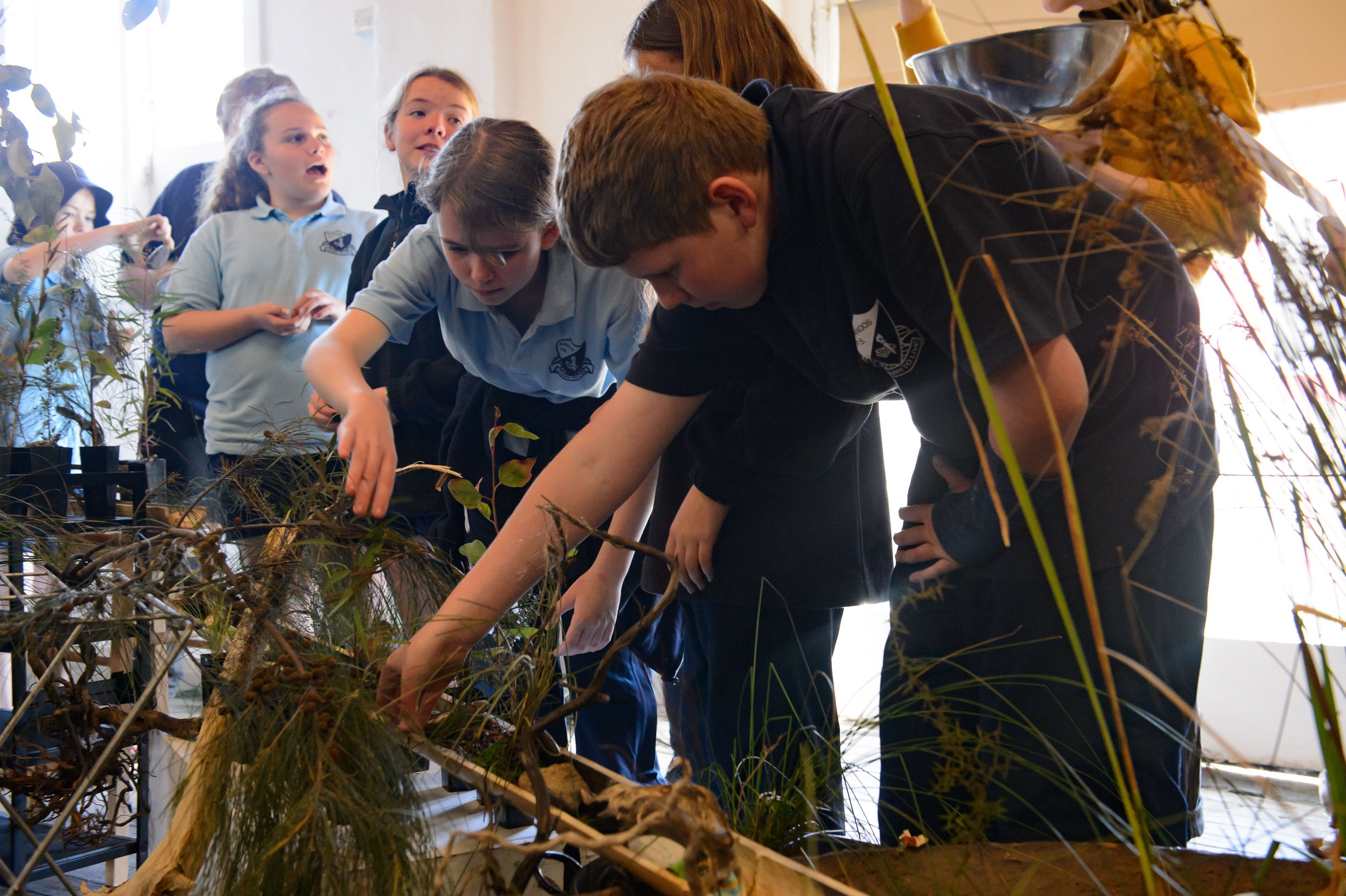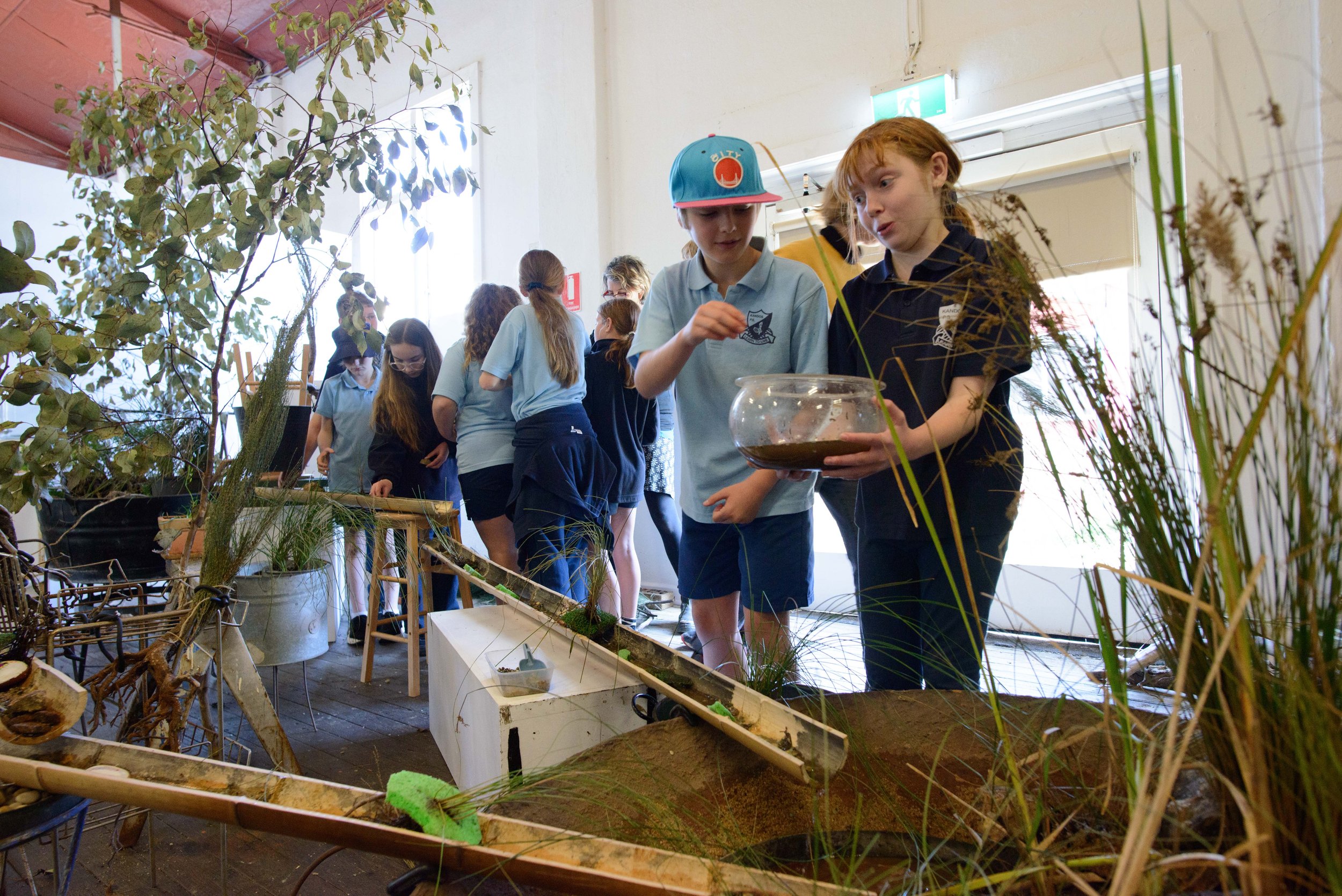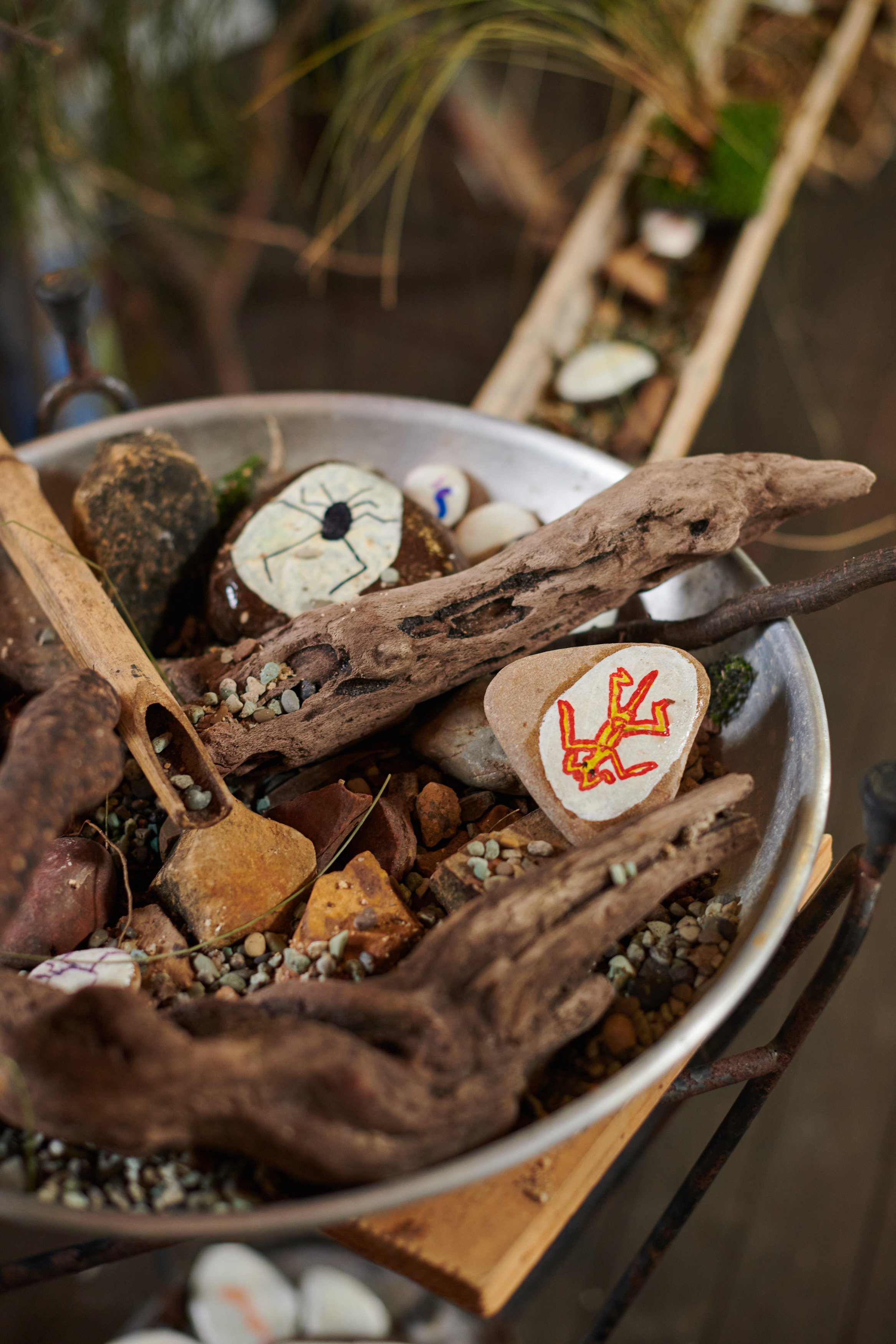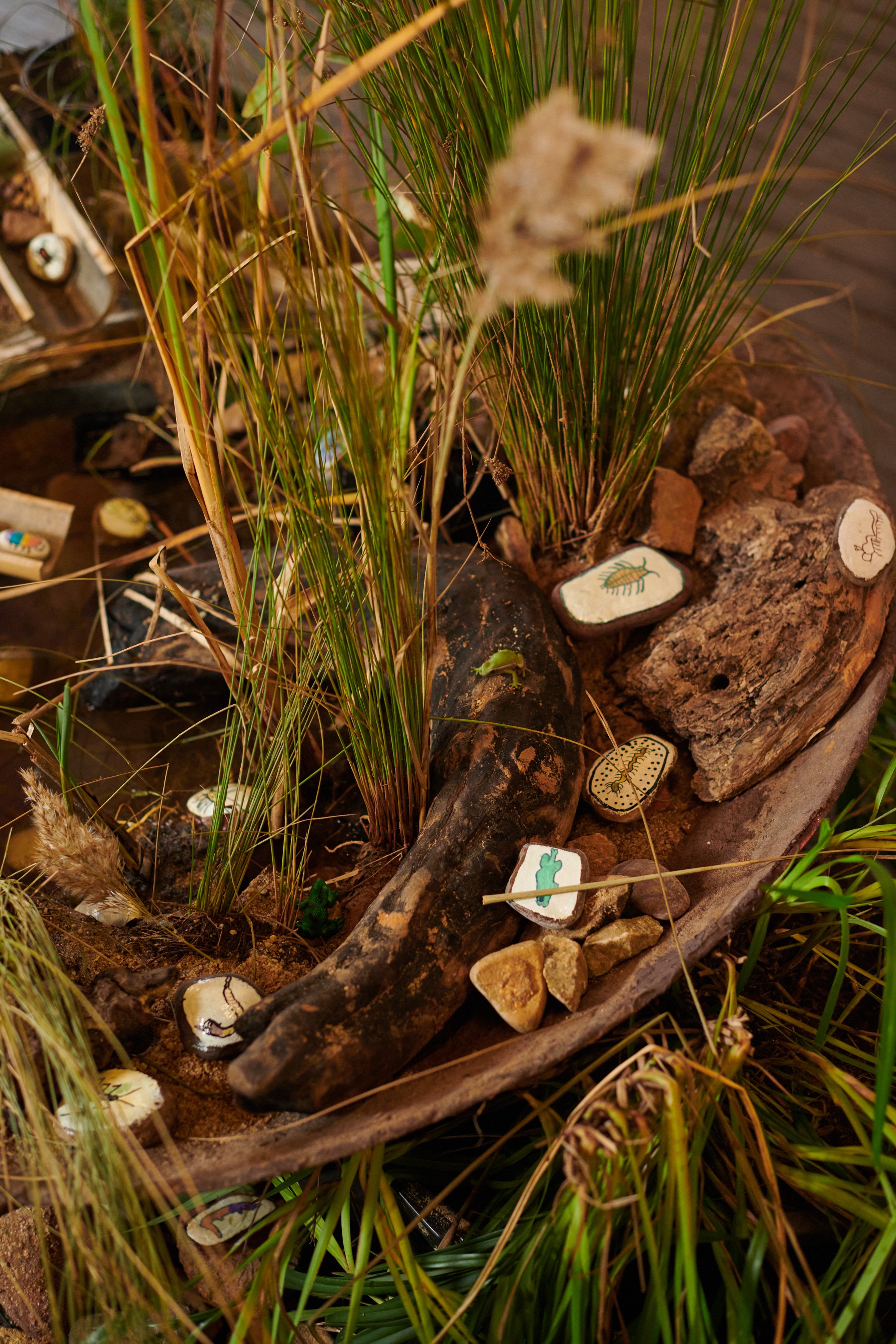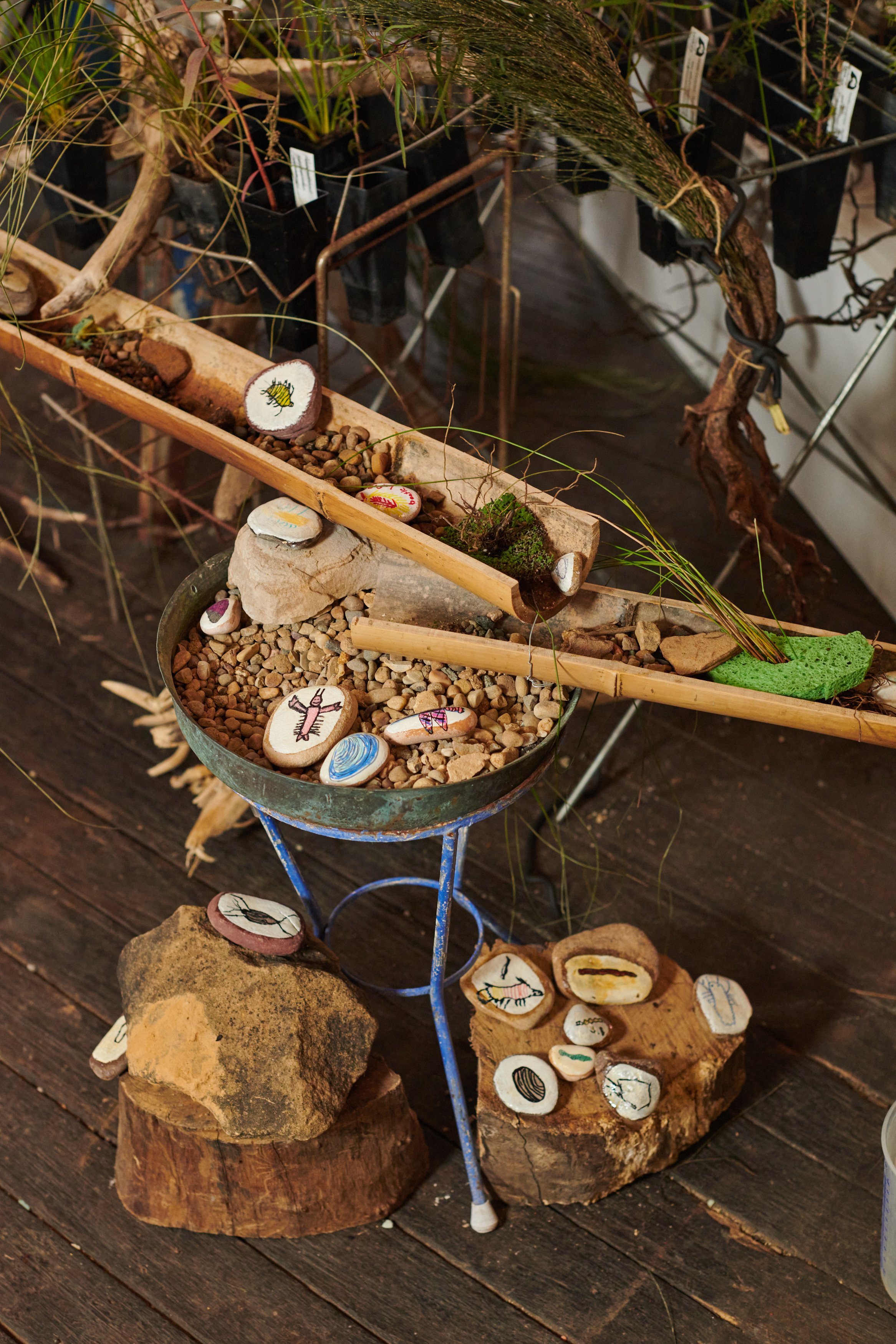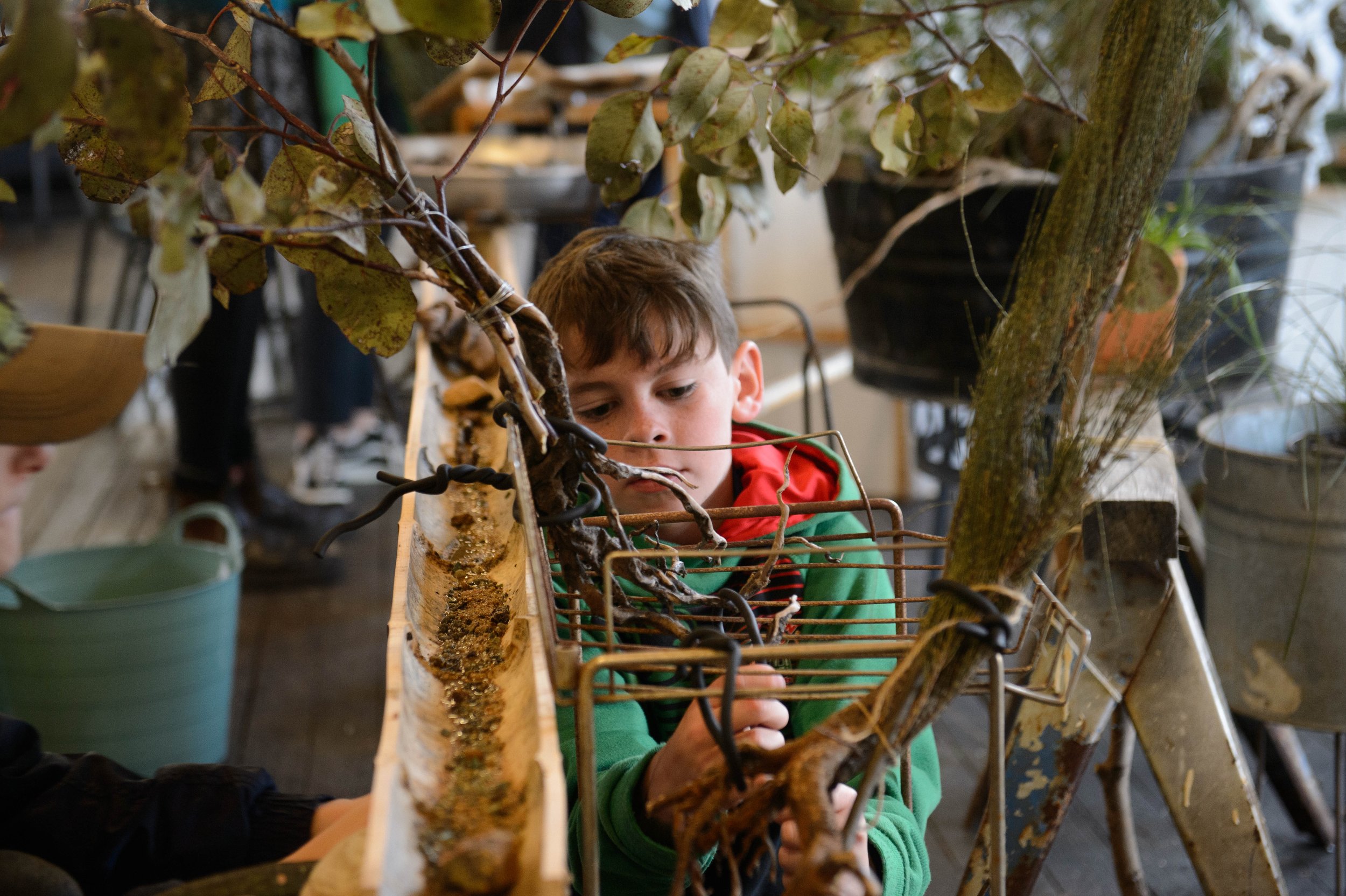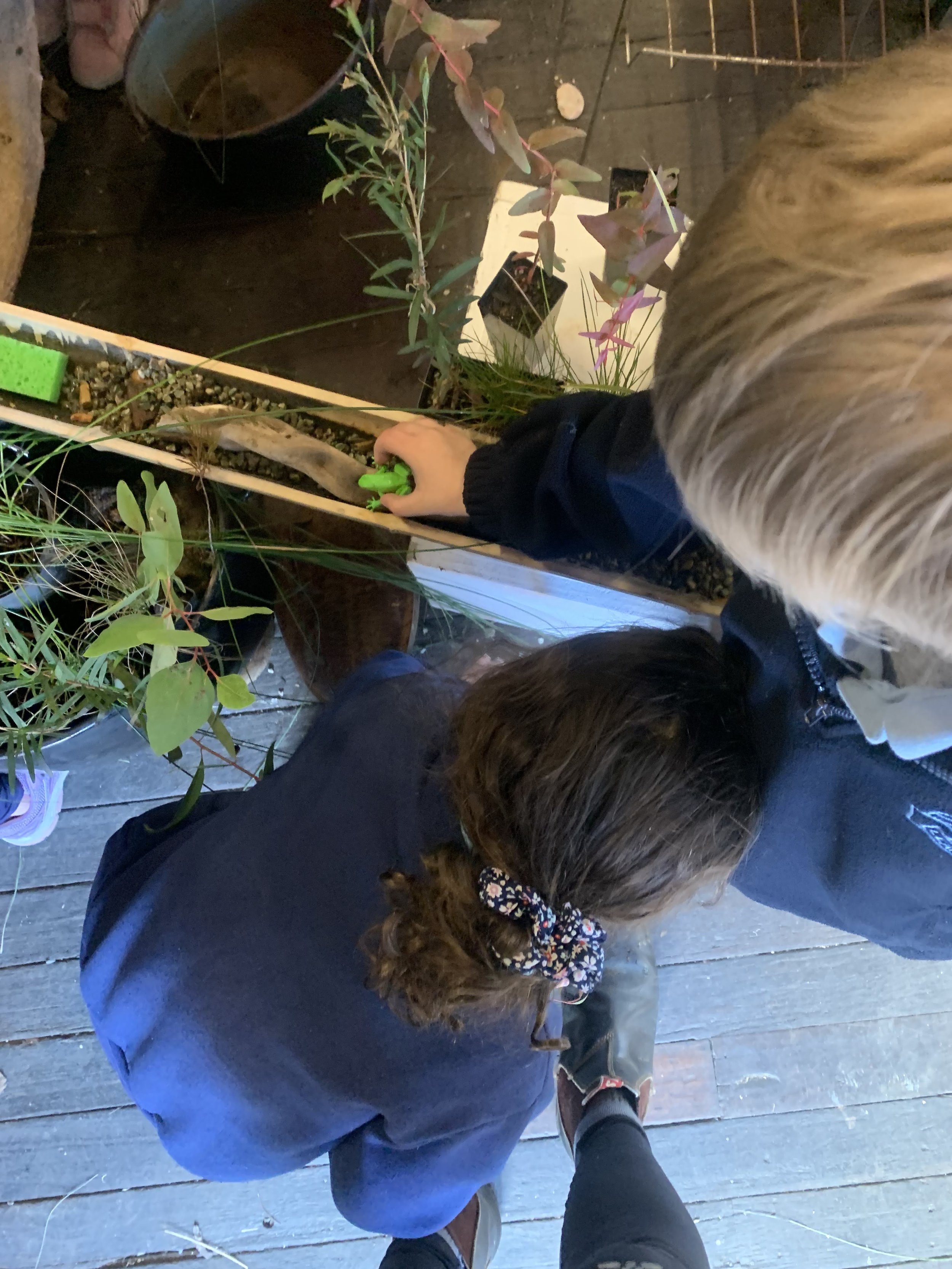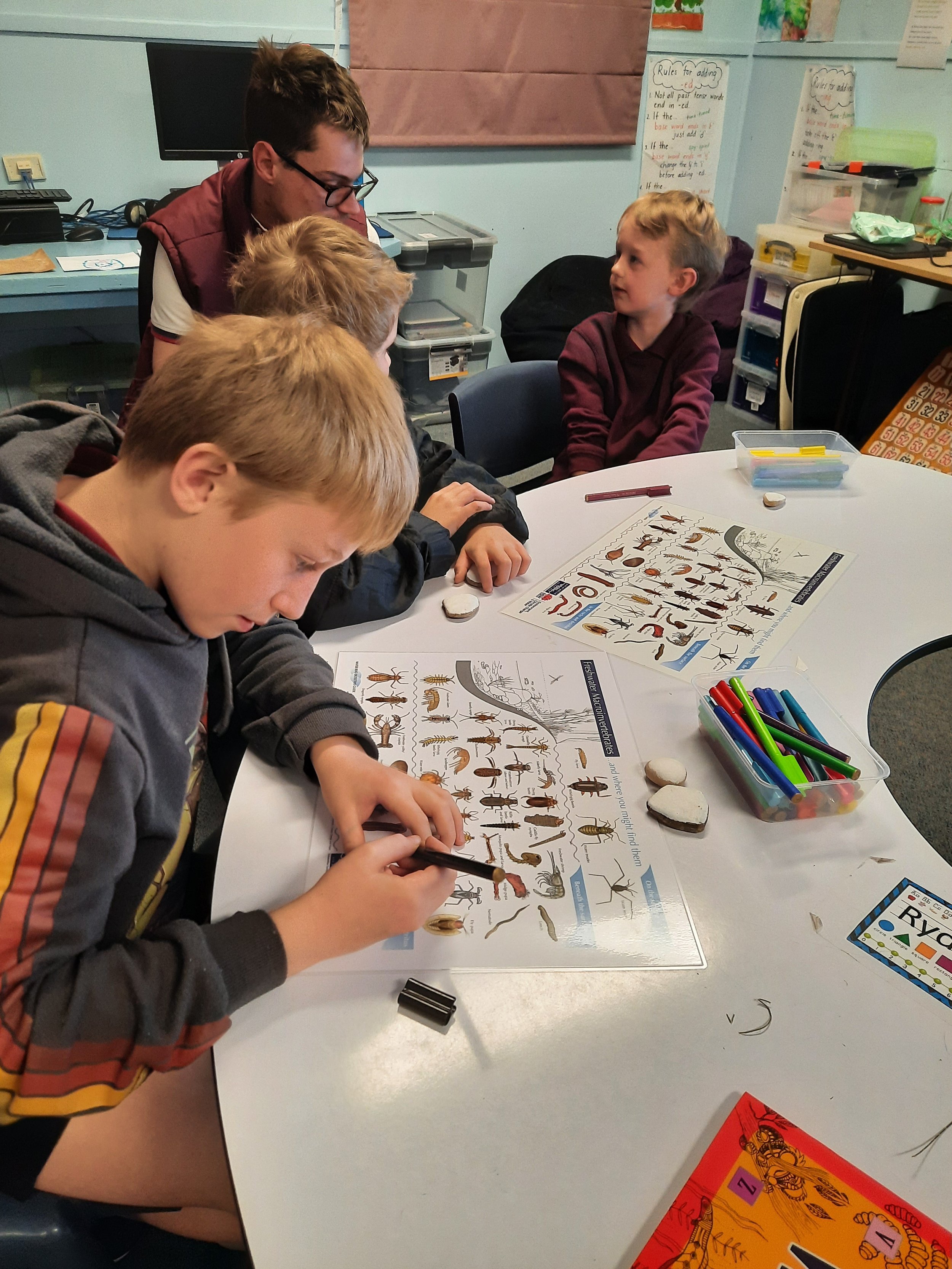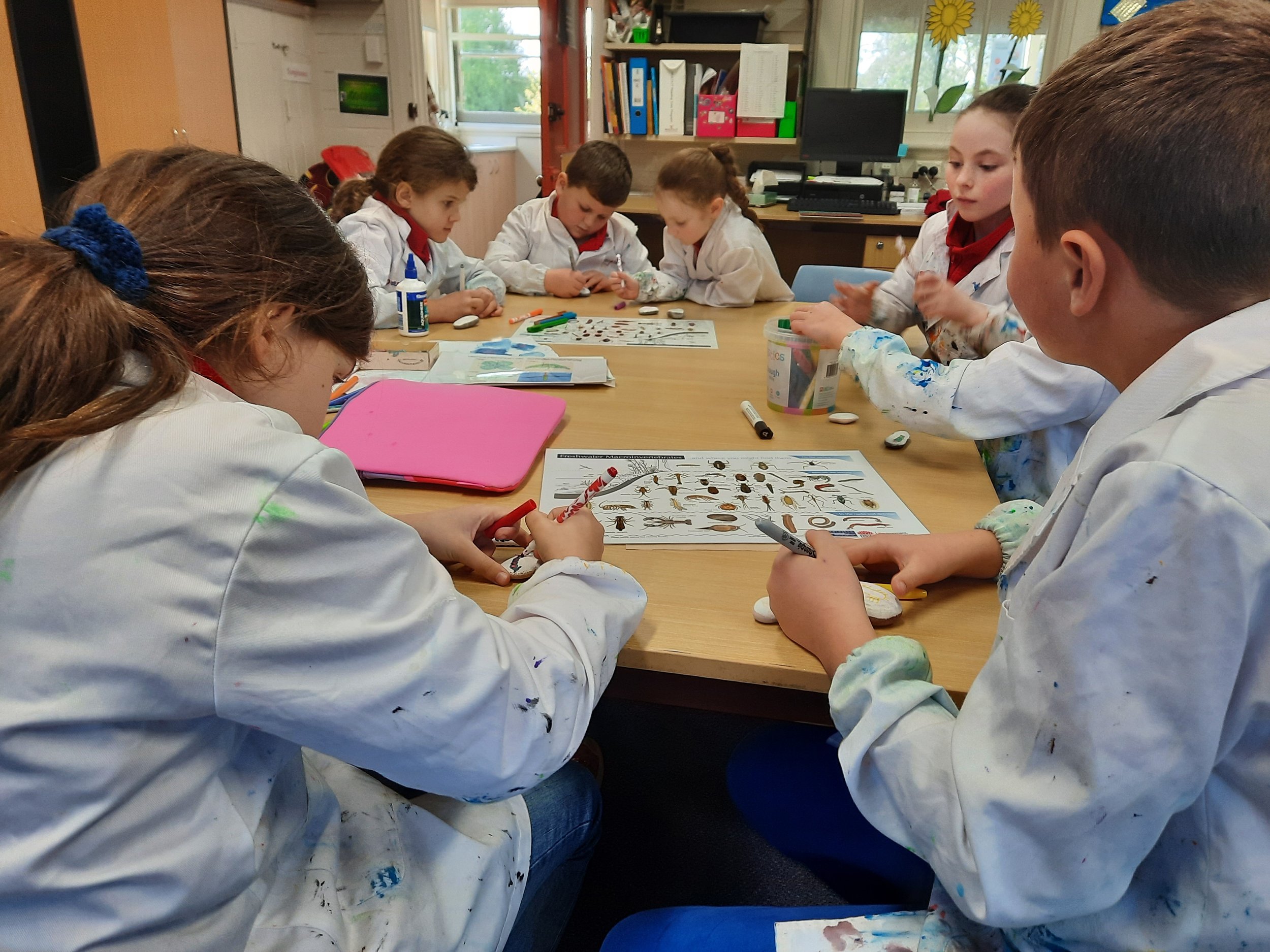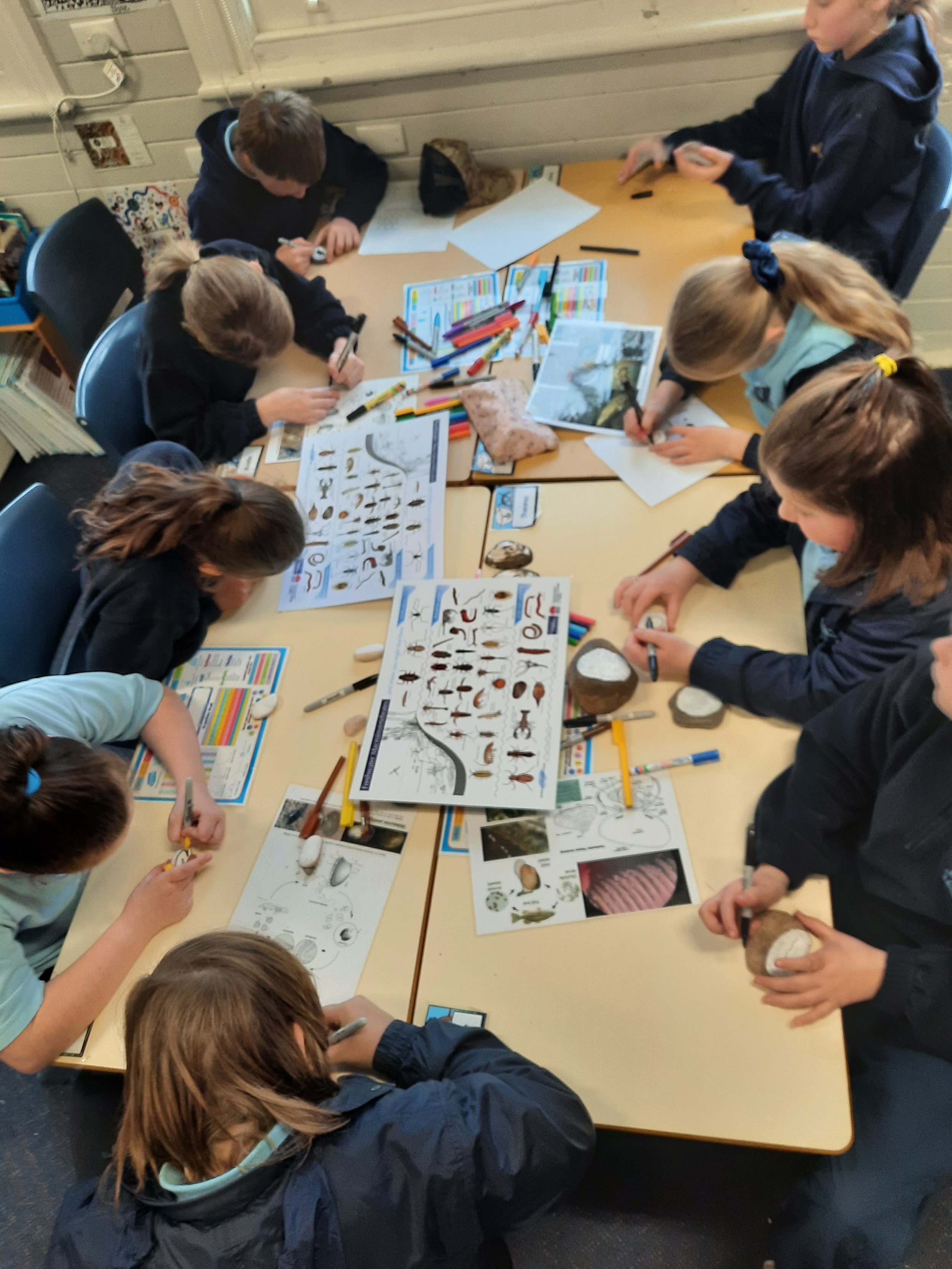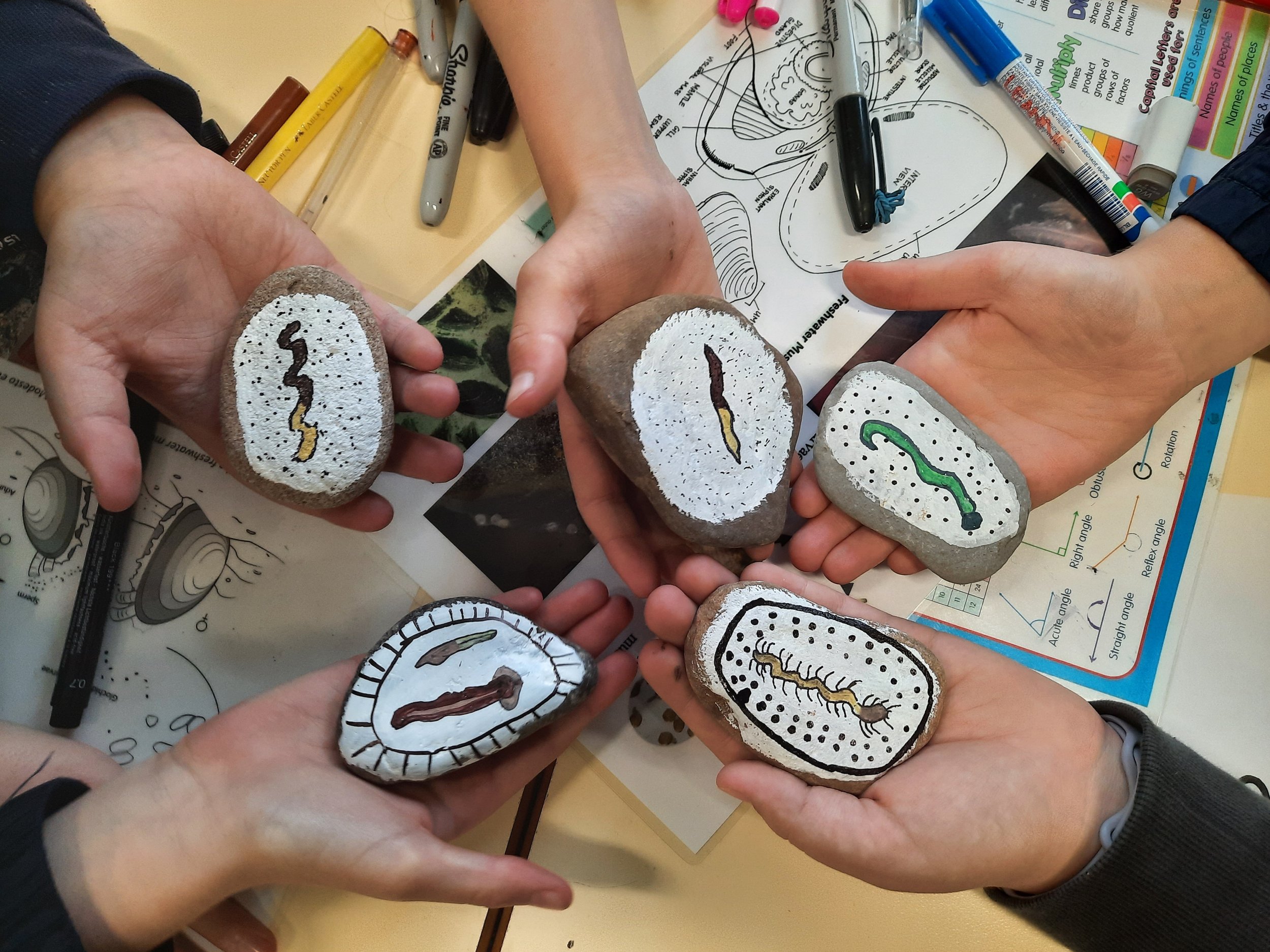Photo by Alex Wisser
The ‘Waterway Model’ was created by Laura Fisher, Kim Williams, Vashti Pearce (curators of Waterland), and Kerrie Cooke and Gary McGuiguin, two residents of the Capertee Valley with a big interest in the health of local rivers (Kerrie is chair of Capertee Valley Landcare, and Gary happens to be a catchment model-maker). Every day for a week, classes from Kandos Public School came to the gallery and built and interpreted the model with us. Students from Ilford, Glen Alice, Capertee and Kandos had also painted dozens of smooth stones with the macro-invertebrates that are vital to fresh water food-chains that featured in the model. The collaboration continued with Leanne, Kerrie, local artist Bridget Baskerville, Maddison O’Brien from Watershed Landcare and local ecologist Hugh Jones taking part in the waterland gallery classroom. Kerrie and Maddy also loaned riparian and aquatic plants. It was a delightful experience watching the model being brought to life by the students each day, especially when the water was poured through. And then just before the exhibition opened, Emma Syme and Peter Swain brought another dimension, linking the model to a striking sand painting about the interlinked waterways of Wiradjuri country.
Photos by Alex Wisser and Gus Armstrong
Below are some reflections written by Kim Williams.
Lengths of bamboo, split in half longways; old metal buckets, saucepans and tubs; various bits of furniture and junk; lots of water plants and others that like to grow near creeks; large and small pebbles; rocks painted with images of native critters; toy reptiles; knitted waterbirds; driftwood; two glass water dispensers with taps on them and a giant dish that was once a kids’ plaything.
These are the materials we assembled to create a waterway model for the Waterland project at Wayout Gallery. Laura and I had been chatting for months about how best to create an interactive model, one that could demonstrate both an unhealthy and a healthy waterway. We agreed early on that bamboo should be part of this system. We’re both excited by the beauty and versatility of bamboo, and it’s light and strong.
Photos by Alex Wisser
How could we simulate a living creek system – one that could move water slowly from a source to an endpoint, with healthy features such as snags, animals, plants, spongy soil and ponds? At the same time, how could we also show a denuded waterway through which water flows quickly and cannot be absorbed by the riparian landscape?
We ‘built’ this model in situ, in collaboration with farmer Kerrie Cook and model-maker Gary McGuigan. While we began with an idea of how it should look, Kerrie quickly intervened, saying “a creek wouldn’t do that”. So we adjusted our plans and organically assembled a quirky but lively interactive artwork. Turning bits of furniture upside down, hanging vessels from lengths of bamboo or balancing them on supports, populating the ‘riparian zone’ with plants – somehow we managed to create a split creek system that flowed successfully into our large ‘pond’ filled with water plants.
Photos by Gus Armstrong
Sometimes you find solutions in the making of the thing. Our initial plan to create two waterways, one healthy and one unhealthy, was superseded through the discoveries of ‘making’. The model’s success lay in the act of co-creation: at first, school students could see that water moves quickly through the model in its bare state. Inviting them to add all the healthy bits themselves – pebbles for riffles, plants, snags, spongy bits and critters – they could see how these things slow the flow of water, thereby hydrating the land. Rather than having two different systems side by side, the effect was achieved through adding and subtracting materials.
Photos by Leanne Thompson and Alex Wisser (centre).
Somehow, this disparate set of materials works, perhaps more so than a conventional model. The stylized representation of a waterway comes alive with the addition of plants as living elements. The buckets and vessels stand in easily for ponds and still points in a waterway. The painted rocks populate the creek with creatures, and the knitted waterbirds stand in wait for a tasty morsel. This model can be recreated anywhere, but due to the organic process of co-creation, can never be the same twice.
Photos by Alex Wisser and Leanne Thompson
This project was a collaboration between KSCA and not-for-profit land restoration organisation The Mulloon Institute, where Laura has a role leading ‘Creative Adaption Partnerships’. Kim’s essay has also been published as a TMI blog. It was supported by the Australian Government through the 'Modelling Landscape Rehydration for Catchments, Communities and Curriculum’ Citizen Science project, the Australia Council, its arts funding and advisory body.
Photos by Laura Fisher and Leanne Thompson
The sand painting created by Peter and Emma that connected to the waterway model, and other Waterland works by Bridget Baskerville and school students. Photo by Gus Armstrong.



